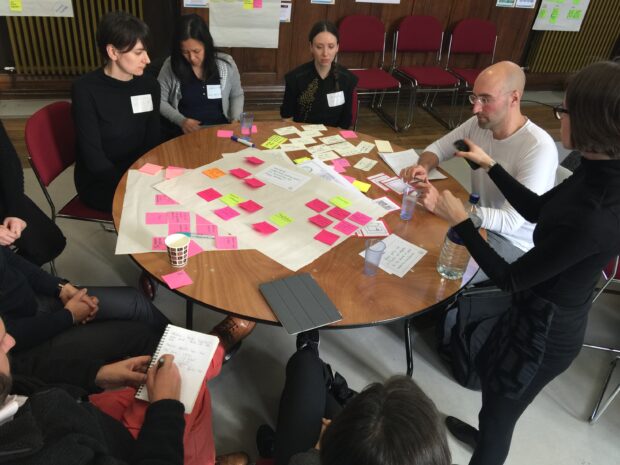
I'm now over half-way through my time in Policy Lab, on loan from the Treasury to learn, employ and ultimately bring back new and innovative policy approaches. During my time at the Treasury I've learned a lot, about how policy gets made - the good and the bad, about stakeholder engagement, and how Whitehall works. I've dealt with long hours, unreasonable deadlines, and pressure - lots of it. I have longed for an opportunity to think more strategically and get creative about policy development. When the loan to Lab came up I jumped at the chance: a safe space to experiment with new tools and techniques and deliver projects that could make a real impact across a range of policy issues. So, what have I learned?
Civil servants don't think enough about the user when we're designing policy. I don't think this is a matter of will - we all want to do more to understand user needs and develop policy and services accordingly - but we (feel like) we just don't have the time, and perhaps we're also a bit risk averse about exposing ideas at an early stage. Policy Lab employs tools commonly used in the design sphere to understand user needs and experience. Personas and journey mapping can be used in an internal 1.5 hour workshop to enable policymakers to put themselves in their customer's shoes and map out how they might experience a service or policy. Although this isn't a substitute for talking to real people (see ethnography), it can really help the project team to focus on user needs from the outset.
Policy Lab places a big emphasis on the visual. How things look is (very) important. This is based on the principle that, if Policy Lab products (presentations, proposals etc.) look good, then people will engage with them. When we create evidence safaris - where reports and other data on a policy issue are condensed into headlines and images on A5 cards for other policymakers to interrogate - strong visuals make complex information easily digestible. Just look at David McCandless's infographics to experience this for yourself: information is beautiful.
Lab works in an agile way. This isn't Agile with a capital 'A', as in the methodology typically used in software development. It's being flexible about what we're doing, re-focusing the aims of the work we deliver when what we find out through research changes our whole outlook on what the policy problem is. This means that we are arguably better suited than most to respond to last minute ministerial steers or new issues emerging. Our projects aren't moth-balled, they just take another direction.
As much as I have enjoyed my time in Policy Lab, there is a part of me that wants to return to the cut and thrust of working in a policy team. I sort of enjoy the deadlines, the direct interaction with ministers, and, dare I say it, the briefing, the submissions and maybe even the PQs. What I intend to bring back to the Treasury from Policy Lab is an unerring focus on the user - I will be that person sitting at the table asking the awkward question about how your wonderful new idea (that you came up with while sitting alone at your desk at 10pm one Wednesday night) might feel for people in practice. All I can hope is that, as Lab's work becomes more widely known, and the Open Policy Making Toolkit more widely used, this will be one of the first questions we ask when developing policy.
1 comment
Comment by Lacey posted on
Home run! Great slgnuigg with that answer!